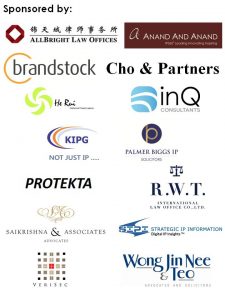An article by Pravin Anand, Managing Partner of Anand and Anand, an ACACAP Partner
The context of public interest in intellectual property cases in India is changing. This article will focus on what the change is with illustrations and argue that this change results in a far greater protection for intellectual property.
- The old concept on public interest :
Just a few years ago, a large corporation having strong intellectual property rights would be looked at with a certain degree of skepticism and both the defendants and the courts, at times, would query why the Plaintiff’s products or services were so highly priced and whether it was not in the public interest to permit a cheaper option. On the question of damages, any damages to the Plaintiff would be considered opposed to the public interest.
- How has this changed :
First and foremost, a new jurisprudence of flexible remedies developed in which courts started granting unusual orders to promote the public interest and somehow punish the defendant and make him pay back for his wrong. Thus, for instance, in a case of Ralph Lauren relating to the trade mark POLO for shirts, the two defendant brothers who were unable to pay damages, were asked to do community service in an old age home and orphanage and asked them to report their good behavior at the end of the month.
In a case relating to chewing tobacco of Baba Zarda, the defendant was made to install 300 spittoons in the Osmania Hospital in Hyderabad, something that would be used frequently by chewing tobacco users.
In the case of Rayban, the infringer again unable to pay, had to make a donation of dark glasses for use in the Blind institute. Similarly, a pirate was made to donate books to the Delhi High Court library.
In a Microsoft case, the director of the infringer was made to sit in conferences and preach the benefits of converting to a non-infringing life style.
Apart from these flexible remedies, judges were becoming very strict in contempt proceedings. Thus, the judges had no hesitation in sentencing the defendant to 30 days imprisonment in a Louis Vuitton case when he made false statements on being asked questions by the judge and this was contempt in the face of the court as against perjury which was to be tried by the same judge through an abbreviated procedure and quickly decided. Similarly in a case relating to “Black” branded cigarettes, an Indonesian company was successful in obtaining Rs. 22 lakhs damages against a defendant who had lied about whether they had sold cigarettes in New Delhi.
In a Bridgestone Tyres case, the defendant had made false statements regarding the brand in which their goods had been exported to Nepal and this initially resulted in the arrest of the managing director and another director followed by a settlement amount of Rs. 36 lakhs.
These orders were growing in number as the judges started to adopt a stronger approach.
In a case relating to Whatman Filter Papers, the directors of the defendant were called to make statements before the court under section 165 of the Evidence Act. The judges found inconsistencies between their statements and held them liable for contempt of court. Damages for a sum of Rs. 1.8 crores were granted against them.
One of the most unusual orders came in a contempt when Merck Inc. suing for patent infringement for the drug Sitagliptin established contempt of court and the defendant was made to plant 140,000 trees on the New Delhi Ridge and to protect the trees till the rainy season and provide evidence by drones keeping in mind the security of the cantonment area. The order specified in detail 16 varieties of trees to be planted which were good for controlling the pollution level of Delhi.
More orders included payments of damages to the All India Institute of Medical Sciences (AIIMS) in several cases and to cancer societies in a Pfizer case which were upheld right up to the Supreme Court.
Thus, one could see that public interest was slowly shifting from questioning the Plaintiff’s gain to letting the defendant suffer for his wrong. Thus, in this way, steps were being taken to create deterrence for IP infringement.
- Impact on Intellectual Property Enforcement:
Is this level of deterrence sufficient?
In the IP community, those that have been stopped and made to pay damages do feel the deterrence but not those who escape for they begin to feel vaccinated, immune or simply protected by divine luck.
Obviously, the degree of deterrence required to reach out to the second category is far higher if IP crime has to diminish.
* * *





